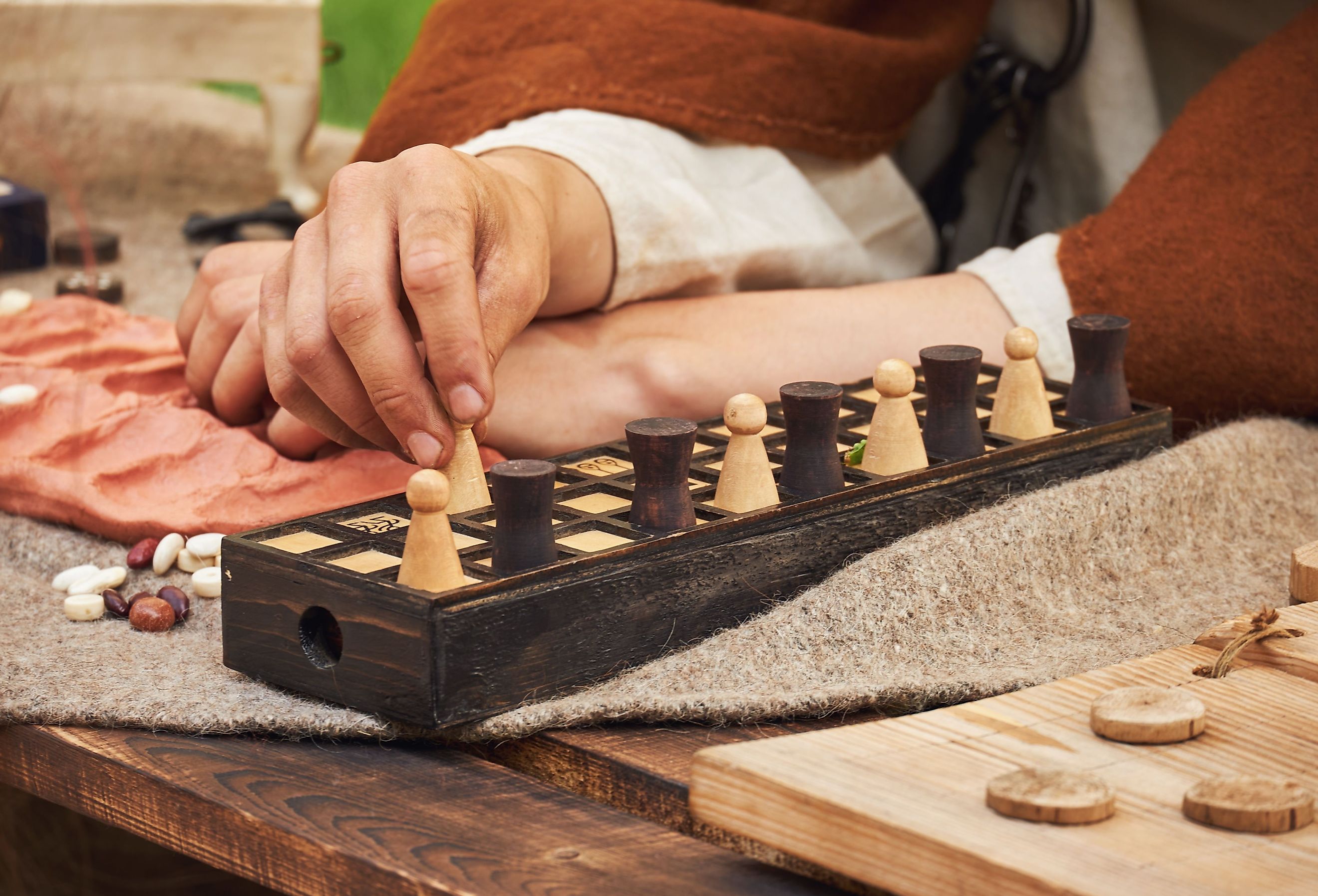
6 Board Games of the Ancient World
For centuries, human beings have managed to find ways to keep busy, and games have been a big part of it. Humans are by nature curious, competitive, and social creatures. Games are a perfect way to nurture these traits by developing our minds, socializing and meeting people, and sharpening our problem-solving skills. And they are also fun.
Some games have long disappeared from human memory, but many ancient board games still exist. Below are six board games of the ancient world.
1. Chess

While it is still technically an ancient board game, chess is young compared to other games on this list. Modern chess traces its origins back to the ancient Indian game of Chaturanga, invented some time between 280 and 550 CE.
The Sanskrit name refers to the “four limbs” of the Gupta Empire’s army: the infantry, the cavalry, the chariots, and the war elephants. It then caught on in Persia, before reaching Europe, a few hundred years later. Pieces moved in patterns similar to those seen in modern chess, though the rules have changed multiple times since then. The 1880s marked the beginning of the Romantic era for chess, a period in which the style of chess-play emphasized quick and tactical maneuvers rather than long-term strategic planning. The first official World Championship of Chess, hosted in 1886, gained the game even more popularity. Standing the test of time, chess still remains a favorite today.
2. Senet

One of the oldest known board games, Senet was first invented in ancient Egypt, around 3500 BCE, with some pieces of the game found in burial sites from the First Dynasty and Predynastic eras.
The game involves several pawns on a board made of stone or wood, with symbols carved into it. Historians are not exactly sure how people played the game because there is no evidence of its rules or instructions. However, Timothy Kendall and R.C. Bell have since made their own reconstructions of the game, thanks to some fragments of texts that mentioned Senet, bringing the game back to life for modern players to enjoy.
3. Backgammon

Backgammon is a game that has been around for centuries, and is still played today all over the world, from real-life matches to online games with strangers thanks to the evolution of technology. The game is one of the oldest ever invented, next to Senet, dating back to 3000 BCE, from Ancient Mesopotamia (modern-day Iraq). Historians traced its origins after they found remains of the board and some early dice made of human bones in old archaeological sites.
The game and its rules, however, continued to evolve throughout history. The biggest change happened in the 1920s when the introduction of the double dice raised the stakes and made it more exciting to play and strategize. This brought on an even bigger audience and more popularity to the game.
4. Go

Go is a two-person strategic game in which the players try to take as much area as possible with their pieces. The game starts with an empty board, where each person has an unlimited supply of pieces, called stones. Chinese Emperor Yao created the game in order to enlighten his son, Danzhu, by teaching him discipline and concentration.
It has existed for over 3,000 years, first appearing in China, and later referenced in history books dating from 548 BC, before making its way to Korea and Japan. Once its popularity grew, it began to catch on through the rest of Asia, then Europe, and the rest of the world.
5. The Royal Game of Ur

The Royal Game of Ur, with its Ancient Mesopotamia origins, is another game that has existed for a long time, dating back to around 2600 BC. Other similar boards were also found in ancient Egypt sites, such as Tutankhamun's tomb, and in India.
Played on an unusually-shaped board, the two players roll the dice and then compete to race their pieces from one end of the board to the other. Some also used the central squares of the board to tell fortunes.
6. Mancala

The earliest documentation of Mancala is in Ethiopia, around the 6th century. The first evidence of the game, written in Arabic, dates back to the 10th century. It is still uncertain where it first originated, but Arab traders may have first brought the game with them during their travels, and then it quickly spread all over Africa, and the rest of the world. The word, "Mancala", derived from the Arabic word Naqala means "to move".
The game begins with one player picking up all the pieces in any one of the pockets on their side, and then moving counter-clockwise to put the stones in each pocket until they run out. The objective is to have the most pieces by the end of the game.
In Summary
Whether you play these games yourself, there remains something beautiful about the history and continuity of these experiences. Older civilizations may have been very different from us in many ways, but we remain linked to them by something as simple as the art of play. We have kept this hunger for competition and nurtured it through championships, new variations, and by teaching it from generation to generation. Board games are a timeless activity that will continue to bring us together.











